M. Gulam Hussain
Overall editing and formatting by Laura Zseleczky
Photos by M. Gulam Hussain
Hakaluki Haor is a unique wetland ecological system of Bangladesh. It is the largest haor in Bangladesh and one of Asia’s largest marsh wetland resources. Haors are floodplain wetland areas typified by many shallow, bowl-shaped habitats. Hakaluki Haor is comprised of five upazilas (sub-districts); three of them—Kulaura, Juri, and Baralekha—are under the Maulvibazar district, while the two other upazilas—Golapganj and Fenchuganj—are under the Sylhet Division. The total area of the haor is approximately 173 km2 and about 40% of this land falls in the territory of Baralekha upazila. The haor consists of more than 238 small, medium, and large interconnecting beels (i.e., natural depressions), some of which are perennial and others seasonal. During the dry season, approximately 4,400 ha is covered by the beels, but with the onset of the rainy season in the summer, the entire area becomes flooded to about four and a half times this size (18,383 ha) and remains underwater for up to five months (Figure 1).
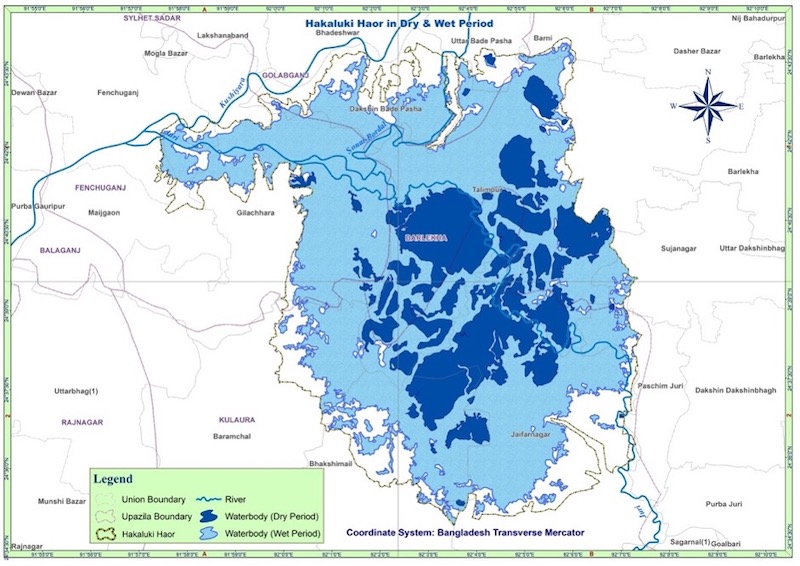
The haor has great ecological, economic, and commercial value and is rich in fish and habitat diversity. The 1993 Flood Action Plan (Shawinigan Lavalin Inc., et al.) reported a total of 130 native fish species found in freshwater habitats of the haor region, while the Center for Natural Resource Studies (2003) reconfirmed 107 fish species in a survey conducted at Hakaluki Haor during October 2001–May 2002. More recently, a study of the haor’s ecosystem diversity found 107 freshwater indigenous fish species (Miah 2012). In 1999, the Government of Bangladesh (GoB) declared the Hakaluki Haor wetland an Ecologically Critical Area under the provision of the Bangladesh Environment Conservation Act in response to threats and rapid degradation of the resources and in recognition of the urgent need to protect its unique ecology and biodiversity (Figure 2). In 2003, the International Union for the Conservation of Nature found 32 nationally threatened freshwater fish species in the Hakaluki Haor (IUCN Bangladesh 2003), which was a positive indicator of declining fish biodiversity in this aquatic ecosystem.
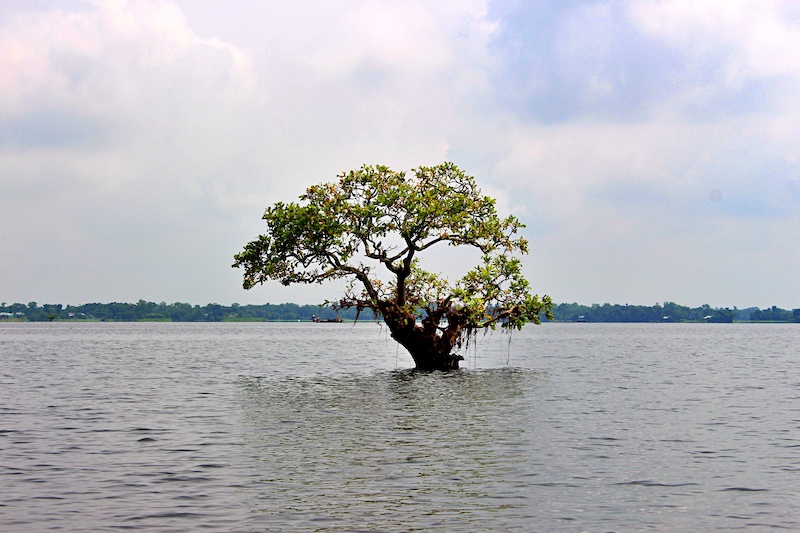
As with other Ramsar sites, or wetlands of international importance, the Hakaluki Haor is managed through a wetland natural resource management and co-management system by the GoB in collaboration with a number of national and international NGOs and local communities.
The GoB has implemented various management initiatives under several development projects during the last two decades to promote sustainable management, community-based natural resources management, and co-management of the haor (Haider, 2013). The major projects implemented so far are the i) Community Based Haor and Floodplain Resource Management project of the International Union for Conservation of Nature (IUCN); ii) Coastal and Wetland Biodiversity Management Project; iii) Integrated Protected Area Co-Management project; iv) Biodiversity Conservation and Social Projection project; and v) Vulnerability and Impact Assessment and Ecosystem-Based Adaptation project.
The overall goals of these projects were to ensure good ecosystem values and services to protect and restore natural habitat and to conserve terrestrial and aquatic biodiversity of the Hakaluki Haor wetland. These projects were implemented incrementally and did not consider how to involve the whole wetland ecosystem or whole community for restoration of habitat and fish or other resource conservation activities. This led to lapses and gaps that need to be filled to ensure the original goals of the projects can be achieved sustainably (Haider, 2013).
To fill these gaps and protect the haor and other wetland resources, we formed a fisheries survey team through a GoB-funded project in the Department of Bangladesh Haor and Wetland Development within the Ministry of Water Resources. This project was implemented by the Institute of Water Modelling in Bangladesh to provide an overview of the present Hakaluki Haor management system and assess the overall fisheries resources and fish biological diversity issues of the haor ecosystem. The project involved public consultation and interviews with the targeted stakeholders.
Winter Season Survey
To cover villages and landing centers adjacent to major beels, we conducted a winter season survey in two selected upazilas, Kulaura and Barlekha, in the Maulvibazar district of the Hakaluki Haor wetland. We targeted key groups and stakeholders through personal interviews of individual fishermen, fish traders at landing centers and local markets, and upazila fishery officers as well as a key informant interview with the Department of Fisheries Sylhet deputy director.
The surveys were conducted using prestructured and pretested questionnaires through focus group discussions, direct interviews of different stakeholders, key informant interviews, personal interviews, household surveys, and spot visits of fish landing centers.
The topics covered during the consultation and group interviews were i) Assess and quantify the existing fish resources available/not available at harvesting during the winter season and determine the status of fish biological diversity; ii) Find out present fishing practices and type of crafts and gear used during the season; iii) Identify the major reasons of declining catch, fish biodiversity, and degradation of aquatic habitat; iv) Assess the impact of declining catch and biodiversity on fish traders and consumers; v) Suggest mitigating measures for improvement of catch, fish availability at the landing centers, and local markets; and vi) Suggest mitigating measures for conservation of fish biodiversity and natural breeding grounds and habitat.
Results
Through stakeholder consultations and discussions, we were able to assess the present scenario and status of fish biological diversity and fish genetic resources. A total 63 fish species were captured and made available in the landing centers/markets (Figure 3), including five species of carps: two endemic major carps (i.e., rohu and catla) and three exotic species (i.e., silver, bighead, and common carps.
Among the harvested indigenous fish, there were 18 moderately available species and 17 less available species (Figure 4). Both less available species and rarely available species can be categorized as vulnerable species, which means they are close to being threatened or critically endangered within a few years.
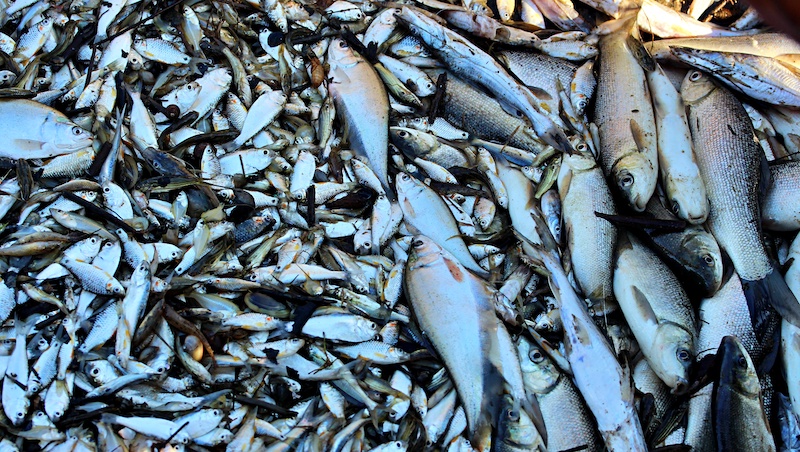
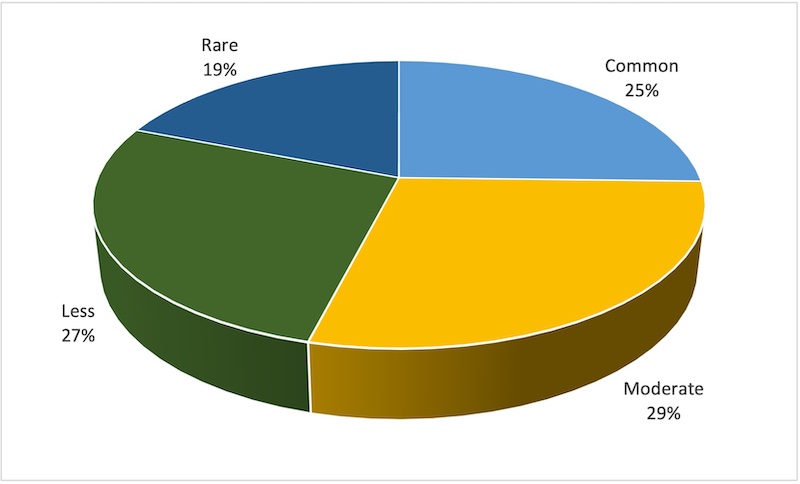
Through the focus group discussions, we gathered information on the present fishing practices and gears used. Fisher groups report using manually driven small wooden boats (12–15 feet long; Figure 5) and mechanized boats (18–24 feet long) when harvesting fish from different beels of the haor. The fishermen use five different types of fishing nets, three types of fishing traps (Figure 6), two types of hooks and lines, and one type of metal/stainless harpoon. This information collected on fishing practices and gears can be utilized to understand their effects on fishing and biodiversity.
It is worth mentioning that the management of Hakaluki Haor is different from the management of Tanguar Haor and other freshwater wetlands in Bangladesh. According to GoB’s Wetland Management Policy of 2005, in the Hakaluki Haor wetland, all the beels that are more than 20 acres in size are currently controlled by the Maulvibazr District Administration (with the concurrence of the Ministry of Land, GoB). These beels are leased out to the highest bidder among the registered fisheries cooperative societies and owned by the local mahajans (i.e., moneylenders) for a period of three years. The beels less than 20 acres in size are controlled and managed by the upazila executive officer. These smaller beels are leased out to the highest bidder among registered local youth associations for a 3- to 5-year term (Khan and Haque, 2010). District fishery officers are members of the district beel management committee and upazila fishery officers are members of the upazila beel management committee.
In this process of wetland fisheries management, one positive impact is the continued banning of fishing for at least three to five years to let the natural and hatchery-released fish grow to a certain size, allowing them to breed in the beels until their harvest. However, the negative impact over the wetland is taking out all the fishes (i.e., fry/fingerlings, juveniles, and adults) during harvesting time by the lease owners, which is extremely detrimental for the biological diversity of Hakaluki Haor wetland. At this point, the mahajans hire the local fisher groups to harvest the fish on a daily payment schedule (Figure 7).
Illegal fishing practices are undoubtedly detrimental to the overall fisheries resources and fish biodiversity at Hakaluki Haor. Specifically, during the monsoon period, local poor fisher groups are permitted under a limited scale to fish in the wetland and the floodplains are intensively fished out by various nets and gears. The nets like the kafrijal (large seine net in Bangla) are especially destructive because they catch fish eggs, larvae, and juveniles (Figure 8). Therefore, legislative attention is required for protecting and banning the use of such destructive gears for sustainable fisheries (Miah, 2012).
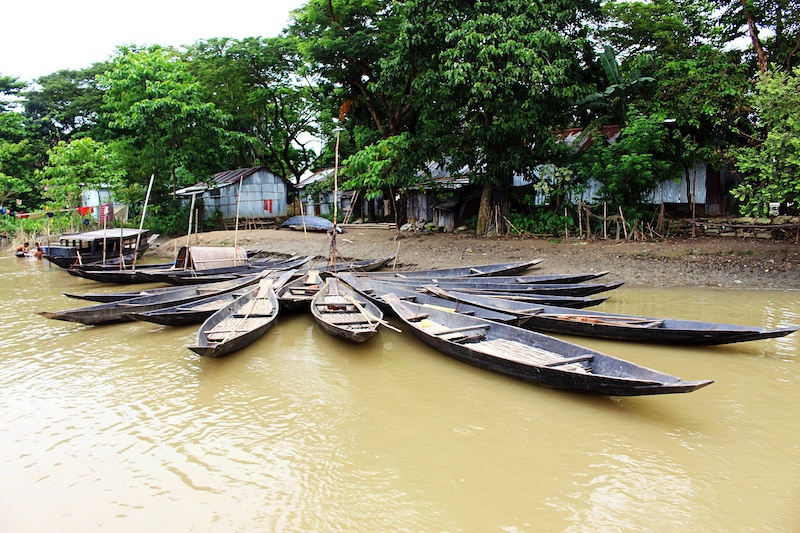
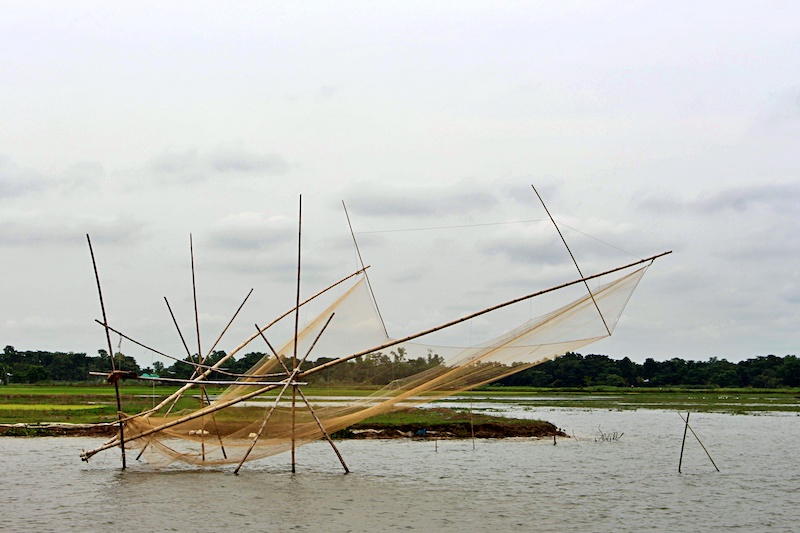
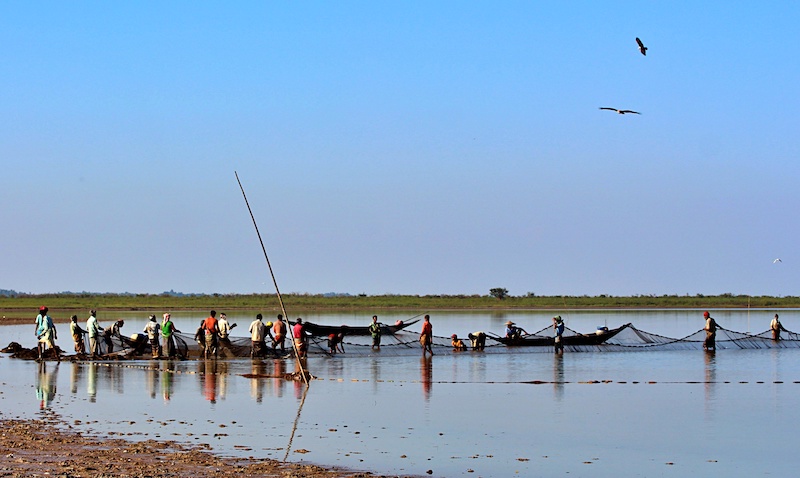
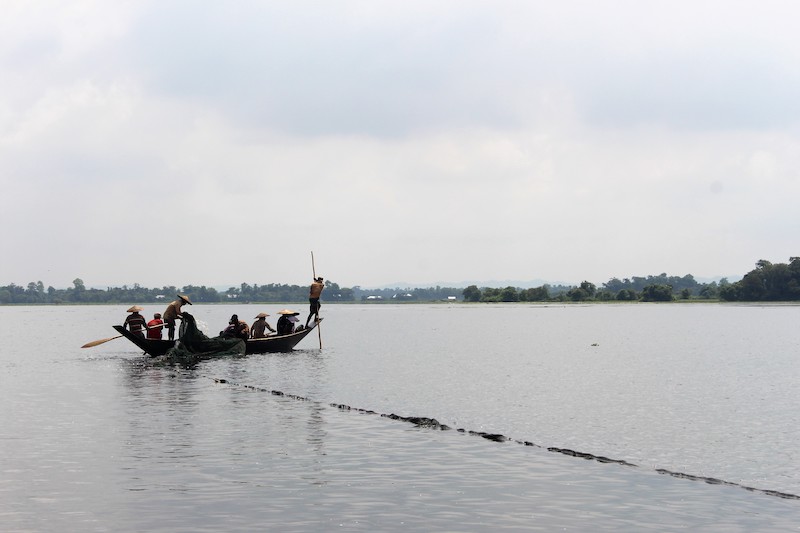
Mitigation Measures for Fish Genetic Resources and Biological Diversity Conservation
When assessing all the stakeholders’ consultations and discussions, it is clear that Best Wetland Management Practices (BWMPs) and an improved management framework should have been formulated and implemented earlier at Hakaluki Haor wetland by the GoB. After completion of donor-funded project periods, there were some lapses and gaps observed. Therefore, it is strongly recommended that the co-management systems should be continued, enhanced, and readopted as integrated BWMPs by the GoB and concerned departments and ministries in a coordinated effort to restore threatened natural ecosystem habitat and conserve fish biological diversity at the Hakaluki Haor ecosystem.
To further these goals, I also recommend:
- Dredge rivers, canals, and beel areas of the haor to increase water flow and depth;
- Establish effective sanctuaries in the entire haor wetland area;
- Create alternative income sources for the fishermen during the ban period to decrease fishing pressure;
- Construct eco-friendly sluice gates at the junction of the incoming rivers and canals;
- Increase public awareness of sustainable use of the aquatic ecosystem and conservation of fish biodiversity at Hakaluki Haor wetland;
- Support more active roles for district fishery officers and upazila fishery officers in the two wetland management committees of Hakaluki Haor wetland; and
- Reorganize and limit the power of current beel leasing systems in the interest of biological diversity of threatened fish genetic resources of Hakaluki Haor wetland.
References
Center for Natural Resource Studies (CNRS). (2003). Biophysical and socioeconomic characterization of Hakaluki Haor: Step towards building community consensus on sustainable wetland resources management.
Shawinigan Lavalin Inc., Northwest Hydraulic Consultants Engineering and Planning Consultants Ltd., Bangladesh Engineering and Technological Services, & Institute for Development Education and Action. . (1993). Fisheries specialist study, Northeast Regional Water Management Project (FAP 6). Canadian International Development Agency.
Haider, M.S. (2013). Impact of community-based natural resources management and co-management of the livelihoods of people in the Hakaluki Hoar area. In Fox, J., Mustafa, M. G., Bushley, B. R., Brennan, S. M., & Durand, L. (Eds.), Connecting communities and conservation: co-management initiatives implemented by IPAC in wetlands and forests of Bangladesh (pp. 143-158). USAID.
IUCN Bangladesh. (2003). Bangladesher bipanno bonno prani.
IWM. (2020). Study on interaction between haor and river ecosystem including development of wetland inventory and sustainable wetland management framework. Draft Final Report: Volume III, Appendix-F.
Miah, M.M.A. (2012). Fish and ecosystem diversity of Hakaluki Haor – A major fishery in northeast Bangladesh. [Unpublished doctoral dissertation]. Bangladesh Agricultural University.
Khan, S. M. M. H. & Haque, C.E. (2010). Wetland resource management in Bangladesh: Implications for marginalization and vulnerability of local harvesters. Environmental Hazards, 9:(1), 54-73. http://dx.doi.org/10.3763/ehaz.2010.SI08
M. Gulam Hussain is the Asia Regional Coordinator at the Feed the Innovation Lab for Fish and the former Director General at Bangladesh Fisheries Research Institute (BFRI).
Published July 16, 2021
Acknowledgements
This study was conducted under the GoB-funded project entitled “Study on Interaction Between Haor and River Ecosystem Including Development of Wetland Inventory and Sustainable Wetland Management Framework” of the Department of Bangladesh Haor and Wetland Development, Ministry of Water Resources, GoB, which was implemented by the Institute of Water Modelling during 2018-2020. The author would like to express his gratitude and thanks to all the authorities concerned in those departments and institute. The author would like to express his gratitude and thanks to Ms. Laura Zseleczky, Fish Innovation Lab marketing and communications manager for her overall editing and formatting of the text. The author also conveys his special thanks and acknowledges the great assistance of Dr. Elin Torell, Fish Innovation Lab deputy director and human outcomes specialist, and Dr. Laura Skrobe for critically reviewing the manuscript of this blog article.
